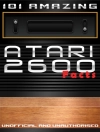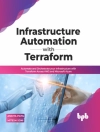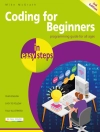Windows Forms 2.0 Programming is the successor to the highly praised Windows Forms Programming in C#. This edition has been significantly updated to amalgamate the sheer mass of new and improved support that is encompassed by Windows Forms 2.0, the .NET Framework 2.0, and Visual Studio 2005. This is the one book developers need in order to learn how to build and deploy leading-edge Windows Forms 2.0 applications. Readers will gain a deep understanding from Sells and Weinhardt’s practical, well-balanced approach to the subject and clear code samples. * Windows Forms 2.0 fundamentals, including forms, dialogs, data validation, help, controls, components, and rendering * Static and dynamic layout, snap lines, HTML-style flow and table layout, automatic resizing, and automatic cross-DPI scaling * Office 2003-style tool strip control coverage, including dynamic layout and custom rendering * Design-time integration with the Visual Studio 2005 Properties Window and Smart Tags * Resource management, strongly typed resources, and internationalization considerations * Strongly typed application and user settings * SDI, MDI, Single Instancing, Multiple-Instance SDI, Single-Instance MDI, database-centric, and document-centric applications * Databinding data-source management, drag-and-drop databinding, the Binding Source, the Binding Navigator, and applied databinding * Events, delegates, multithreaded UIs, long-running operations, simplified multithreading with the Background Worker, and asynchronous web service calls * Click Once application development publishing, shell integration, and partial trust security * Best practices for developers transitioning from Windows Forms 1.0 and MFC
Chris Sells & Michael Weinhardt
Windows Forms 2.0 Programming [PDF ebook]
Windows Forms 2.0 Programming [PDF ebook]
Dieses Ebook kaufen – und ein weitere GRATIS erhalten!
Sprache Englisch ● Format PDF ● ISBN 9780321467911 ● Verlag Pearson Education ● Erscheinungsjahr 2006 ● herunterladbar 3 mal ● Währung EUR ● ID 8768353 ● Kopierschutz Adobe DRM
erfordert DRM-fähige Lesetechnologie












